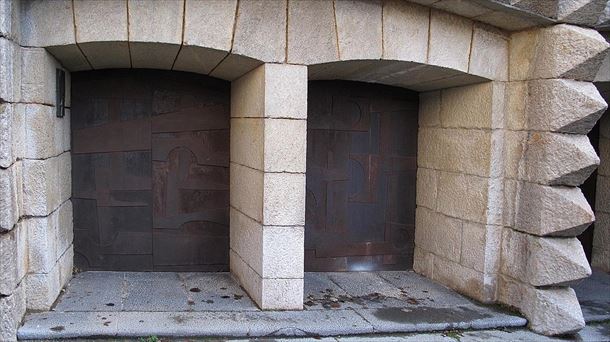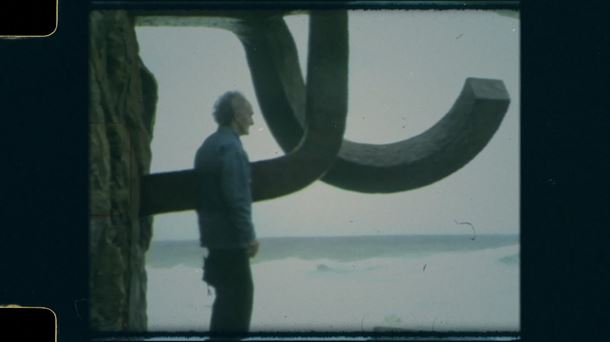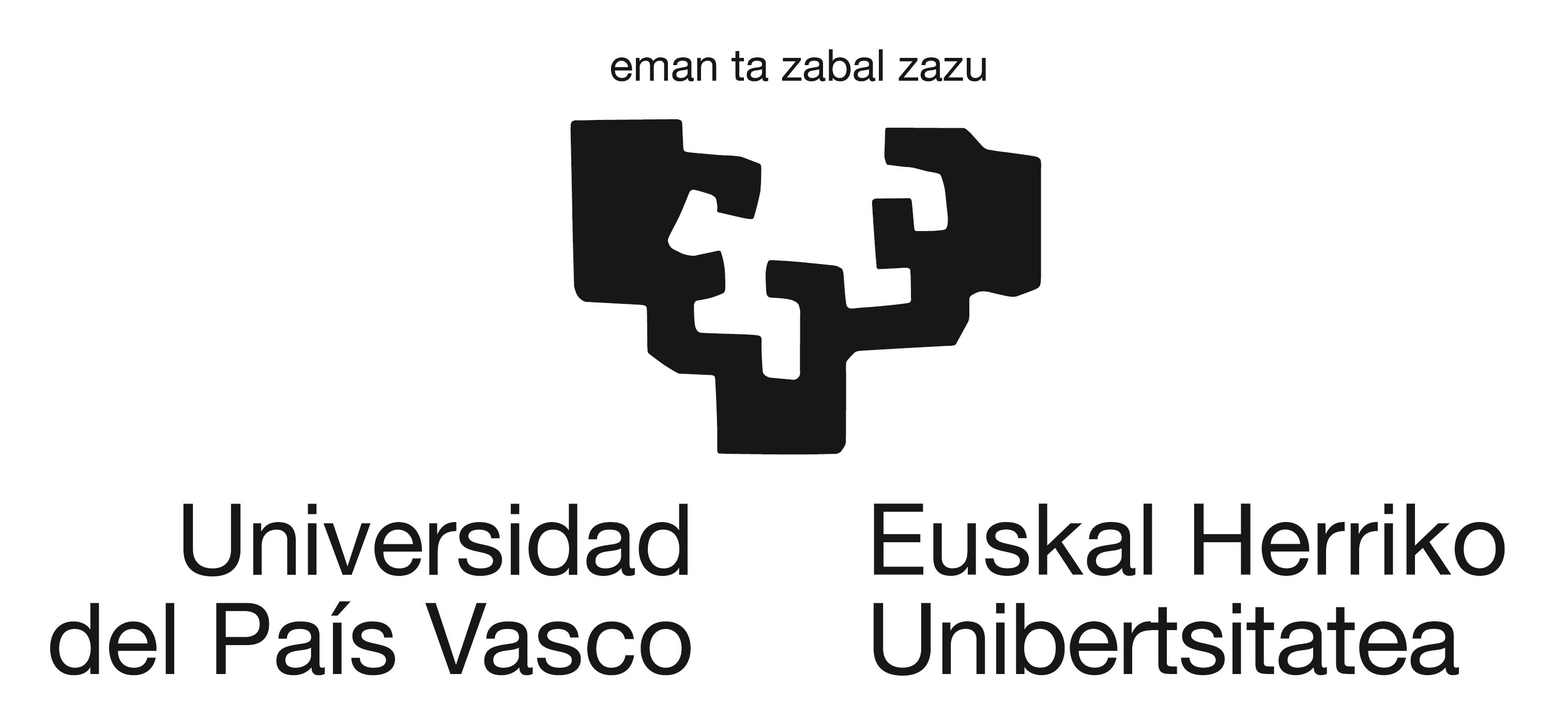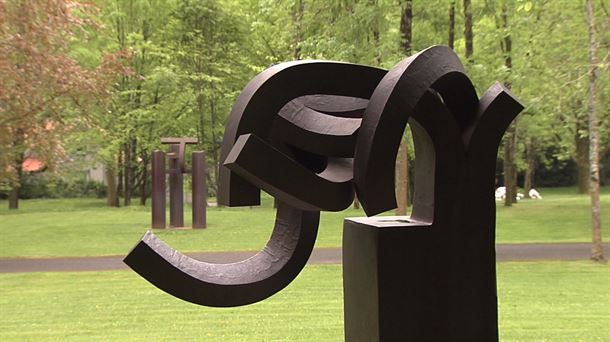Chillida: notes from an inexhaustible work
Euskaraz irakurri: Chillida: work agorrezin baten lagin batzuk
Painting, collage, drawings, sculpture –of course–, engraving… The artist Eduardo Chillida (San Sebastián, January 10, 1924 – San Sebastián, August 19, 2002), one of the fundamental names of Basque art of the 20th century, bequeathed a monumental work and influence.
His work is more than known, both through his public sculpture present in dozens of cities and through other works that have hosted, host and will host museums throughout the world; Experts of all backgrounds have referred to it from the most diverse points of view, such as, for example, Peter Selz, James Johnson Sweeney, Martin Heidegger, Emil Cioran and Octavio Paz.
In this text, we have collected some samples of that extensive work.
Doors of the Basilica of Arantzazu (Oñati)

Photo: Kamahele, CC BY-SA 3.0 DE
In 1954, Chillida created the Doors of the new Arantzazu basilica three years after returning from Paris and beginning to work iron. Ilarikcreated in 1951, was his first piece in iron and his first abstract work, once figuration was relegated.
The four entrance doors form a metallic collage achieved by superimposing different sheets. These plates are made of scrap metal and industrial waste, a material chosen by Chillida inspired by Franciscan austerity.
In addition to Chillida, Jorge Oteiza, Nestor Basterretxea, Lucio Muñoz and Javier Alvarez de Eulate participated in the construction of the Arantzazu basilica.
Comb of the Wind XV (San Sebastian)
In addition to one of Chillida’s most iconic works, the Wind Comb (this piece has adopted, by metonymy, the name of a complete series composed of 23 pieces) is already a symbol of the Gipuzkoa capital itself.
Located at the end of the left profile of Ondarreta beach, the complex is made up of three pieces weighing about nine tons each and culminates a space designed by the Basque architect Luis Peña Ganchegui.

Chillida, before the ‘Comb of the Wind’
It was inaugurated on September 3, 1977.
UPV/EHU symbol
The University of the Basque Country (UPV/EHU) was created in 1980, and was presented to the world through this ideogram designed by Chillida and a verse by Iparragirre: “eman ta zabal zazu” (give it and spread it).

UPV symbol
The San Sebastian artist also designed the symbols of the movements against the Lemoiz nuclear power plant and in favor of amnesty in the post-Franco era. Precisely, this year the Artium museum in Vitoria will dedicate the exhibition Screech. Applied useswhich will open on November 15, to this aspect of the artist.
Gernika and Berlin, as an example of public works
Public art is, perhaps, the best-known section of Eduardo Chillida’s work, as demonstrated by himself. Wind Comb previously reviewed. On numerous different occasions, Chillida established a dialogue between art and public space, generally through large-volume pieces.
Washington, Doha, Gijón, Loiu, Grenoble, Barcelona, Helsinki, San Sebastián itself… We can collect examples in cities around the world, but this time we will focus on two: Gure aitaren etxeain Gerinka, and Berlinlocated in the German capital itself.
Gure aitaren etxea It was inaugurated in 1988, in the Park of the Peoples of Europe, commissioned by the Basque Government to remember the 50 years of the bombing inflicted on the Biscayan town and “in tribute to peace and tolerance.”
Another example of Chillida’s prolific public work is “Berlín” (1999), a 6 x 6 meter, 90 ton piece of steel that presides over the headquarters of the German Federal Chancellery in the capital. It represents two arms about to intertwine, a symbol of the German reunification of 1990.
Chillida Leku (Hernani)
“One day I dreamed of a utopia: finding a space where my sculptures could rest and people could walk among them as if through a forest.” These wishes of Chillida materialized in the Zabalaga hamlet of Hernani, when the Chillida Leku museum was inaugurated in September 2000.

Chillida Leku
After being closed in 2010 for economic and stylistic reasons and remaining nine years without welcoming visitors, Chillida’s dream was revitalized in 2019, and was opened again to the public by the Swiss gallery Hauser & Wirth.
Chillida Leku houses more than 40 works by Chillida, “in conversation with the environment”, and the space also serves as a venue for temporary exhibitions by other artists and events of all kinds.
Source: Eitb
Bruce is a talented author and journalist with a passion for entertainment . He currently works as a writer at the 247 News Agency, where he has established himself as a respected voice in the industry.












